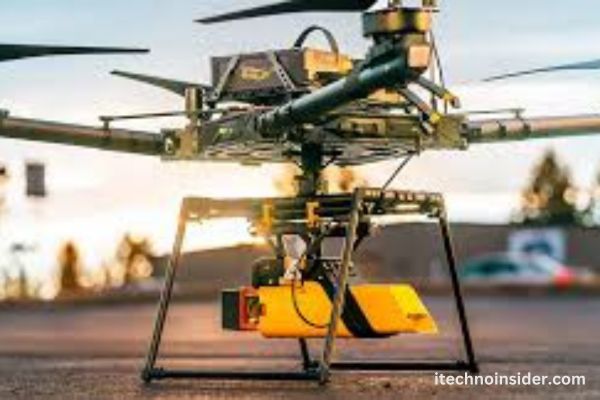
What Are Drones Used For?
Drones — or unmanned aerial vehicles — are as ubiquitous as the radio, digital cameras and the internet. They’re used to search avalanche victims, detect landmines and help with reforestation efforts. They’re even delivering pizzas and packages to your doorstep. Drones come in various sizes and configurations, with some offering more functionality than others. This article will cover five of the most common types.
Unmanned Aerial Vehicles (UAVs)
In the past few years, drones have been used to track penguins in Antarctica, take pictures of the Grand Canyon, and even help save lives in search-and-rescue operations for first responders. But while this technology may seem new, it’s actually been around for a long time.
In fact, the earliest drones were military-specific systems designed to serve in the military and police forces. For example, the U.S. Navy’s Pioneer drone was an upgraded version of the AAI Corporation’s IAI Scout drone that fought in the Gulf War and helped capture Iraqi troops.
Today, many large companies recognize the benefits of drones and have incorporated them into their operations. Drones can be used in areas such as package delivery, mobile edge computing, cellular communication, smart healthcare, transportation systems, video surveillance missions, precision agriculture, power-line inspections, and remote sensing of land and water.
As the industry continues to grow, so do regulations governing the operation of drones. The Institute of Electrical and Electronics Engineers (IEEE) has created a Drone Working Group to create techniques, systems, specifications, testing, and evaluations for consumer drones that emphasize privacy and security issues. This will help protect the public and their private property as well as encourage further adoption of drones. A number of regulatory agencies are also implementing drone classifications, which will allow for more rapid approvals for promising use cases.
Hobbyist Drones
Hobby drones are perfect for capturing stunning aerial footage and photos of your travels or for creative projects like filming landscapes, architecture, or people. Many of these models take advantage of technologies that allow them to perform hands-free flying and are super easy to fly, even for beginners.
The best consumer drones are stable in wind, have long flight times, and shoot video with resolution that rivals cameras that cost a thousand dollars or more. Some are even equipped with advanced features like subject tracking, collision avoidance, and automatic return to home.
As the popularity of these drones has exploded, many communities have developed to help people share tips, get advice, and grow their skills through friendly competition. From racing leagues to photography contests, these clubs have helped grow the hobby into a global pastime with a strong and vibrant social component.
If you’re a beginner and don’t want to spend hours assembling components, then an RTF model is the way to go. These models come fully assembled, tested to ensure they are safe to fly and have all the features you need to begin exploring new horizons. They also offer a range of spare parts, like rotors and batteries, that are easy to replace and swap out when required. Some of these models are also designed to be portable, with foldable arms and compact frames so you can easily fit them into a backpack for your next adventure.
Midsize Commercial and Military Drones
The military drone market is growing fast. The need to provide accurate information for combat missions is a driving force, and drones are better suited than piloted aircraft to scanning terrain, weather patterns and building structures. They are much quieter, too, so they can operate in areas where a pilot might be exposed to danger.
These smaller UAVs are a crucial force multiplier for ground troops in many battle environments. But the rapid evolution of small drones from mere toys into accessible weaponized technology has challenged governments and militaries to develop countermeasures. Most have responded with reactionary defensive efforts, including drone-detection radar and jammers, geofences and no-fly zones, and even grenades and nets.
As drones become more widely available, manufacturers are experimenting with designs to make them easier for soldiers to deploy and use. One of the most interesting examples is a system developed by DefendTex and BAE Systems called Black Hornet that allows users to sling the drone into a structure via its grenade launcher. The company says its ‘Bug’ drone can carry a variety of sensors and systems, such as microphone, loudspeaker, white/infrared/red light, interchangeable lenses, mapping camera and distraction device, within a weight limit of 250g. The British Ministry of Defence trialled a version onboard Royal Navy ships in Mali between late 2020 and November 2022.
The History of the Atomic Bomb
Large Military-Specific Drones
As drone technology continues to advance, military drones are becoming increasingly sophisticated. They are used for surveillance, reconnaissance and intelligence gathering, battle damage assessment and even carry missiles and bombs. They are often equipped with advanced sensors, high-resolution cameras and thermal imaging systems as well as navigation systems, communications relays and other military-grade features.
Enhanced propulsion systems allow drones to fly longer and at higher altitudes. Modular drone designs allow for quick adaptation of systems, enabling them to be tailored for specific missions. Satellite communication systems ensure that drones can maintain real-time contact with their controllers at extreme altitudes, beyond the line of sight.
Drones are now being developed with artificial intelligence (AI) systems that enable autonomous decision-making, increasing their utility in military operations. For example, drones with AI-assisted visual recognition systems can now identify and track targets in real time. This advancement is revolutionizing military drone capabilities and has profound implications for combat tactics.
Military drones are also being designed to work in a swarm, allowing multiple drones to collaborate and perform coordinated missions without human intervention. This capability could be used to saturate enemy defenses, perform mass reconnaissance or create decoys for air defense systems. The international community is working to develop regulatory frameworks for military drone use, ensuring that they comply with the laws of war and protect civilian populations.







